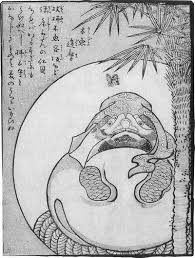I was wandering around Nara years ago and unexpectedly ran in to one of the most iconic of Indian symbols, the lion pillar of Emperor Asoka. Set in the four corners of India in the 3rd Century BCE to spread Buddhist law, the lions are a continuing symbol of modern India. Their somewhat incongruous appearance in this ancient capital of Japan is due to their presentation by the Indian government to commemorate the 15ooth anniversary of the arrival of Buddhism in Japan.
Nara far more than Kyoto is affiliated with Indian Buddhism as can be seen in Todai-ji, whose interior reflects the architecture of Indian Temples I’ve seen, though conceived in wood rather than stone. Fittingly, the consecration of the DaiButsu at this temple in 752 CE was performed by a South Indian monk named Bodhisena.
According to this interesting paper by Dr. Hikotaro Furuta Indian influence extends beyond Buddhism to Shinto Gods like Daikoku and Benten Sama who have become identified with Indian deities. He also posits that Sanskrit words have migrated to Japan as in the case of the Biwa, the Japanese lute, being named for the classical Indian stringed instrument, the Veenai. For those contemplating such ethnographic connections while touring Nara, I’d suggest lunch at the previously mentioned Ragamala, an Indian music themed restaurant situated in an old Japanese house.
Of course the most ubiquitous Indian persona in Japan is Daruma, whose visage is seen everywhere due to the influence of Zen in Japanese culture. Zen more so than most other sects of Buddhism has kept an Indian flavor and Daruma as its front man, is ever present in Japan as he’s absent in his native land.
Finally, I’d be remiss if I didn’t mention “Karei”, the ever popular spicy sauce in common dishes such as Karei Spaghetti and Karei Rice. Brought to Japan by the British as their interpretation of Indian spices, what they called “curry” has after some localization become another staple of the Japanese diet due to its distinctive flavor.





No comments:
Post a Comment